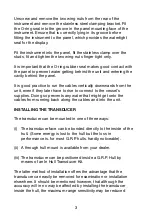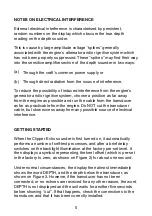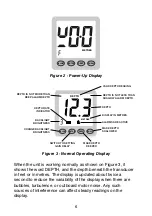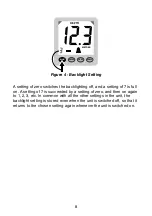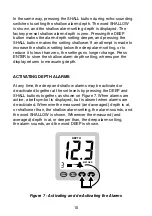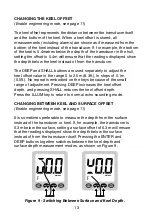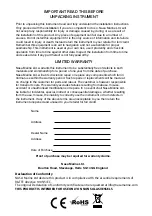
The depth rate indicators (to the right of the backlight brightness digit,
see Figure 3) are used to assist in interpretation of the bottom profile
as the vessel moves over it, or to indicate the effects of tide and swell.
The display of the depth rate is derived from averaged measurements
of depth. When the depth measurement is steady (the depth is
constant), only the middle bar is lit, as shown on Figure 3. If the depth
is increasing, the right arrow-head is lit instead. Likewise, if the depth
is decreasing (it is becoming shallower) only the left arrow-head is lit.
The depth rate indicators work on an averaging time of several
seconds, and so, when the unit is first turned on, the right arrow is
lit to indicate that the unit’s estimate of the depth is increasing from
its initial value of zero. When the average value has stabilised, the
middle bar lights instead. Whenever the rate at which the depth is
changing is less than about 60 feet per minute (20 metres per
minute), the central bar is lit. When the rate is higher either the left
or right arrow-head is lit.
The depth rate indications are the only displays which cannot be
changed by the user to match the operating requirements. The
Clipper Echo sounder has a number of facilities which can be
changed during normal operation to change the settings of the
backlighting, to alter the depth where swept gain begins, to change
the settings of the depth alarms, and to switch depth alarms on or
off. All these facilities are described below.
OPERATIONAL CONTROLS
BACKLIGHT SETTING
Backlighting is provided to allow the unit to be seen at night. The
backlight area is restricted in the top corners of the display to
concentrate the lighting in the areas of interest. The brightness of the
backlighting is adjusted by pressing the ILLUM button at any time
during normal echo-sounding operation. Each press of the button
increases the brightness by one in the range 0 to 7, shown by the
backlight indicator in the bottom left of the display (see Figure 4).
7
Summary of Contents for ECHO SOUNDER
Page 1: ...ENTER SHALL DEEP ILLUM CLIPPER DUET CLIPPER ECHO SOUNDER METRES DEPTH CLIPPER DEPTH...
Page 2: ......
Page 19: ......





